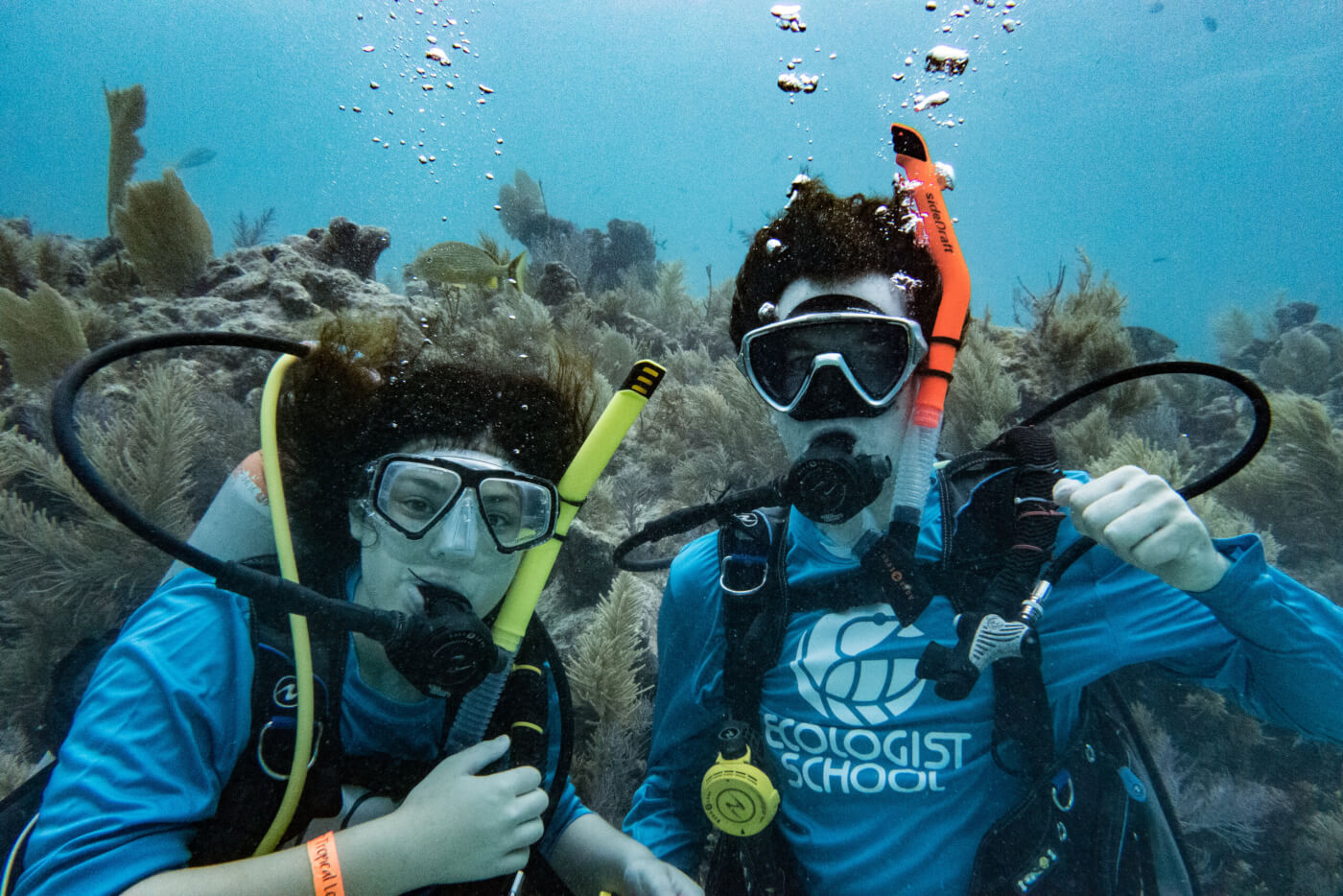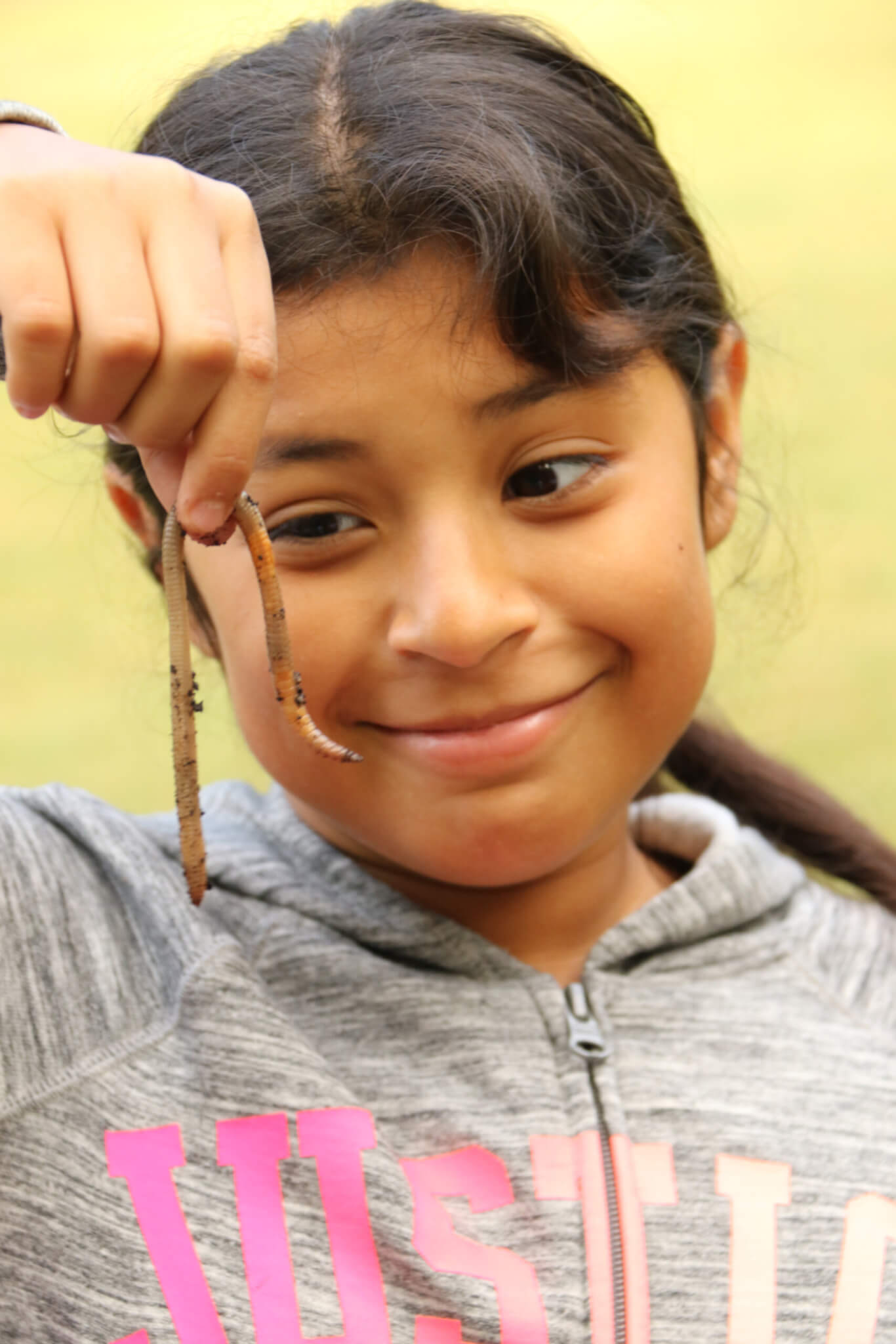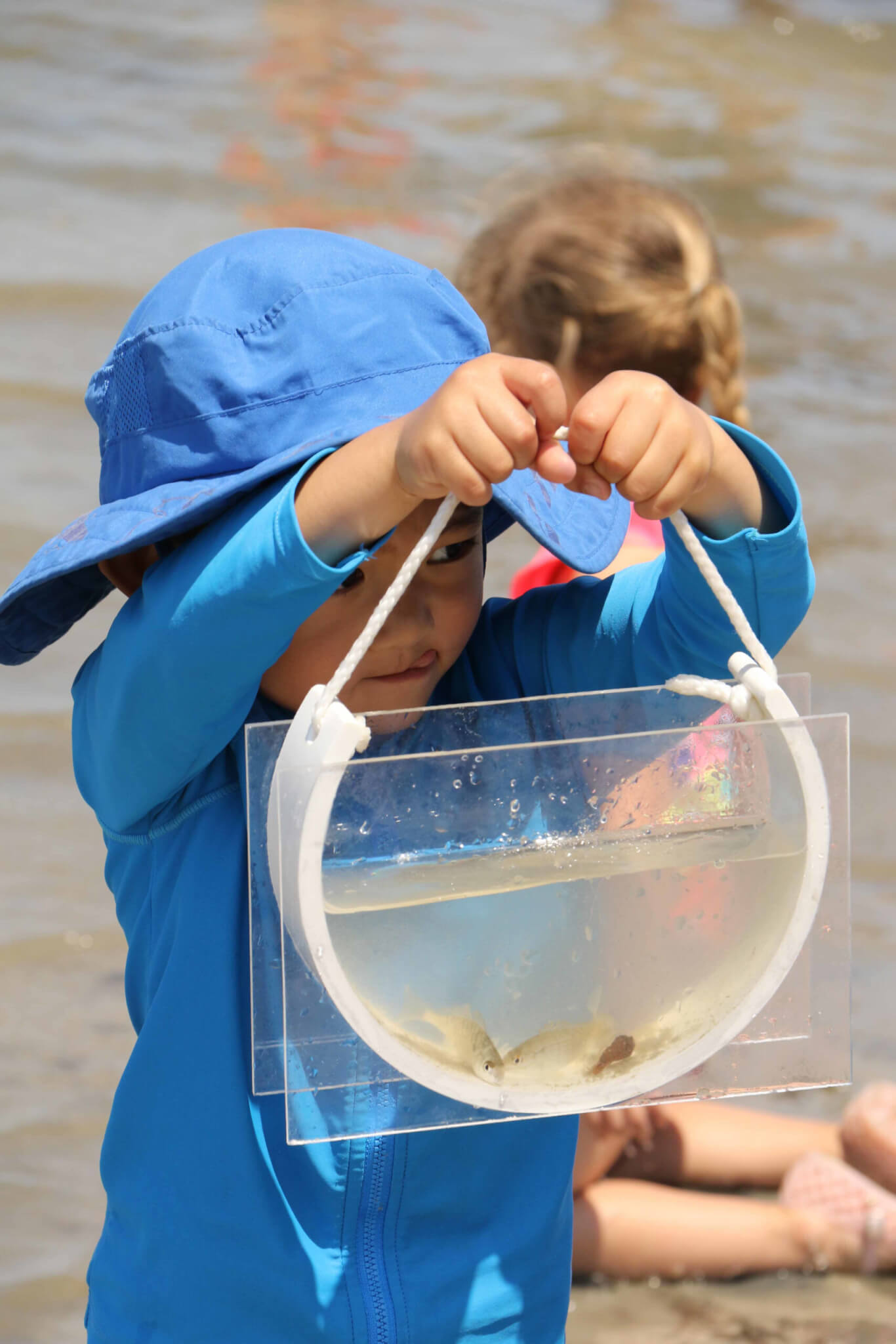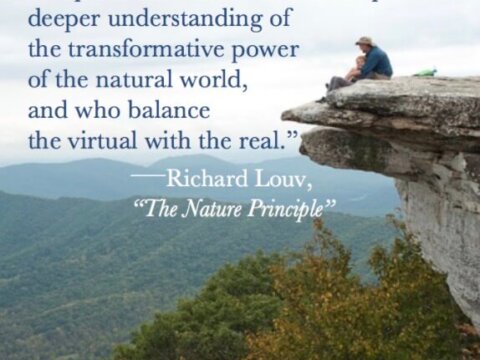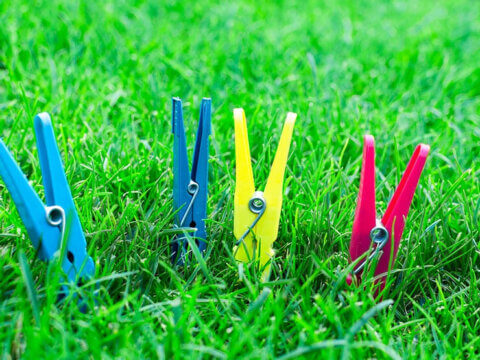Using science and play to inspire families to connect with nature
Heather Kuhlken can inspire a child to start loving nature with just a headlamp and a few minutes.
Her trick is to go outside on a dark night and have kids beam a headlamp across a grassy field. When they look out with a loose gaze, they’ll see glittering glass. Once they focus on the sparkles, they’ll realize the glittery bits are spider eyes – because nocturnal animals, like spiders, have a membrane in the back of their eye that reflects light and allows them to gather twice as much light while seeing in the dark.
“It’s science you can teach in two minutes,” she says. “And then the kids spend the next hour and a half running around in the dark squealing in excitement about spiders.”
“And what you’ve done is taught them a different way to interact with nature. And how to build community by playing and discovering together.”
The spider trick is just one of many ways that Kuhlken, a trained biologist and educator, uses science and play to spark excitement for nature through Families in Nature, the organization she founded in 2008. Families in Nature provides educational experiences and play-based time in nature to all ages, all together.
“Our vision is to connect families to nature and foster the next generation of conservationists,” she said.
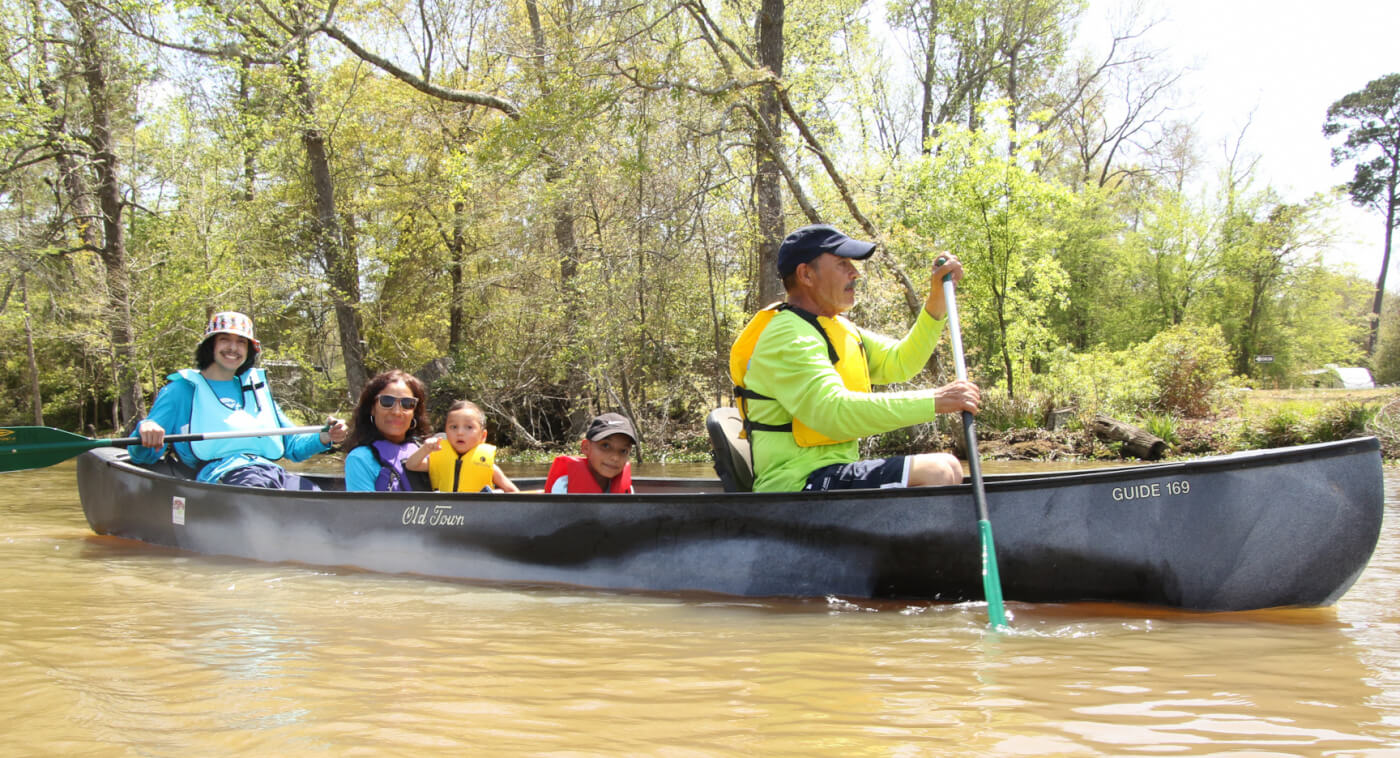
A family canoes among the cypress trees of Martin Dies, Jr. State Park in Texas. Photo: Heather Kuhlken.
The idea for Families in Nature took root after Kuhlken’s neighbors in Austin, Texas asked if she could take a few local families on a camping trip. Her initial outings and backyard science experiments were such a hit that the demand for them exploded and the endeavor soon grew into a full-fledged nonprofit.
Now, Families in Nature empowers many people to get involved in outdoor play and learning through activities like building backyard habitats, examining pond water under a microscope, and embarking on nature walks, service projects and community campouts. The organization helps children and their parents learn about the outdoors and conservation through hands-on experiences in nature – while spending quality time together.
“Science gives families something to do when they’re outside and it introduces a new way to play and a new way to explore nature,” she explains. “It helps people of all ages interact and gives them tools to connect with the environment around them.”

A FIN birdwatching lesson with industry pioneer Victor Emanuel at the Austin water treatment plant in Hornsby Bend, Texas.Photo: Heather Kuhlken.
A pillar of Families in Nature programming is exactly as advertised: families in nature. Kuhlken believes that many families are craving opportunities to do things together – and that nature can offer a meaningful way to foster connection. That was part of her initial motivation to start doing this work back in 2008.
“Our family needed time together,” she said.
“I wanted to create something where people can put family time on the calendar and have nature be an important part of those familial relationships – however you define those.”

Father and kids hiking out to a bird banding lesson hosted by Families in Nature and Texas Parks and Wildlife. Photo: Heather Kuhlken.
The programming intentionally caters to a multigenerational group – and respects that families can be defined in many different ways.
“Family, to us, is whatever family is to you,” says Kuhlken.
The organization utilizes nearby nature and accessible areas to make it easier for families and people of all ages to participate. Kuhlken wants to lower the barriers to entry – and make the outdoors as approachable as possible. The activities and itinerary are usually loosely planned so that people can come and go around their scheduling demands, like soccer games, music lessons or work.
“We want to make these opportunities available to the most people – and make it easy to participate, whether you have a six-month-old baby or are over 70 years old,” she said. “The more flexible we can be, the more inclusive our programs will be.”
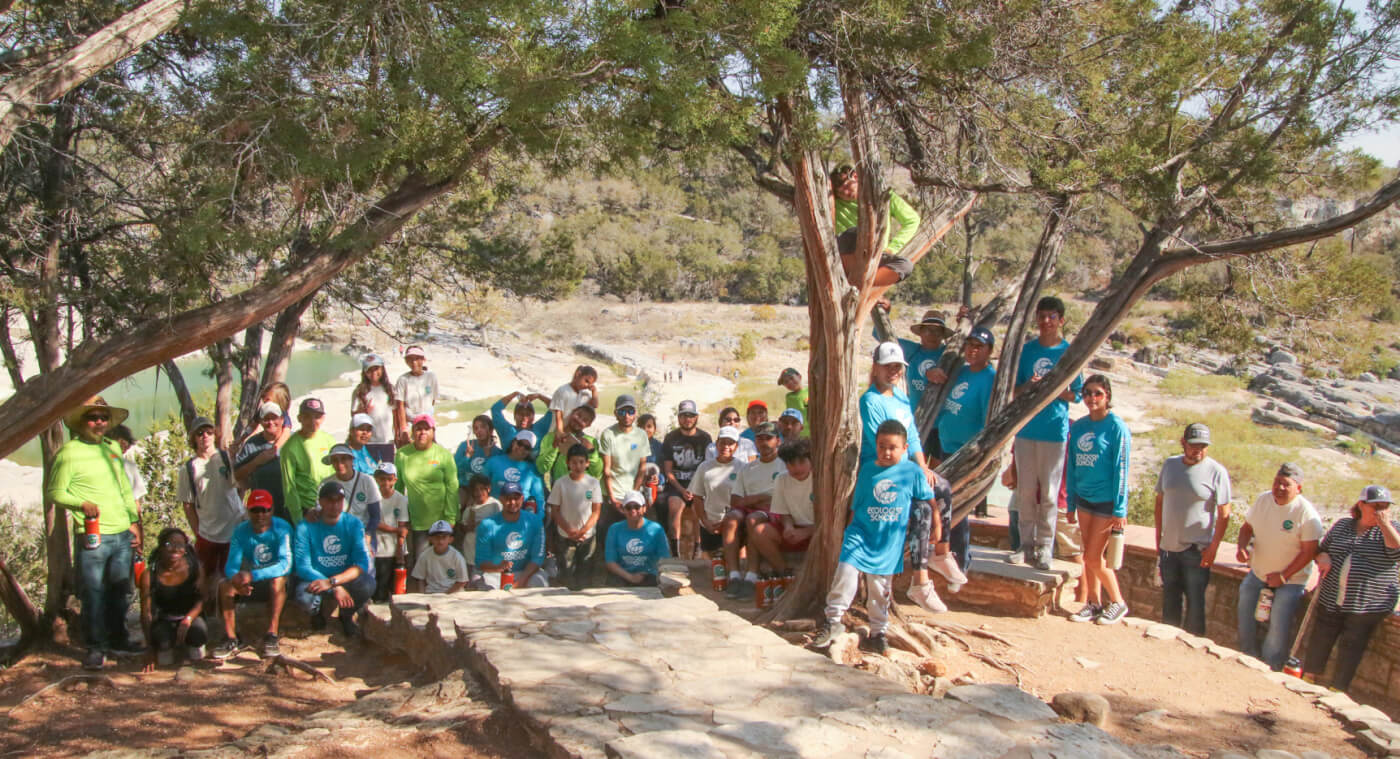
Familias Aventureras FIN Nature Community camping and learning about geology and fossils at Pedernales Falls State Park in Texas. Photo: Heather Kuhlken.
Inclusivity is another key value of the organization. A quick scan of the Families in Nature Instagram account reveals that they highlight all ages, skin colors, genders and gender identities doing activities outside.
“That’s super intentional,” she says. “Anyone can go outside or be a biologist – and I want our organization to reinforce that idea.”
She also believes that their approach to building a diverse community through play and science is an important foundation for anti-racist work. She says that their programming introduces children to a diverse community at an early age and enables them to form connections and friendships with people of all races and gender identities.
“We have kids who have no shared language to communicate [verbally], but they become great friends who play together,” she said.
Kuhlken already has plenty of anecdotal evidence that the organization is also achieving its goal of fostering the next generation of conservationists. Many kids who were introduced to camping and the outdoors through Families in Nature programming 15 years ago are now involved with the organization as adult guides and interns. Others have gone on to pursue degrees and careers in environmental work.
“Getting introduced to nature at an early age helps kids develop a conservation mindset,” she says. “They develop a desire to change the world and make it better.”
Because the program has been so successful on a local level, Kuhlken has produced resources and trainings to help spread the programming outside of Texas. She authored a book, “Adventures in Ecology: A guide to inspire ecological literacy, outdoor adventure, and nature connection for all” (publication pending), that includes more than 1,100 lessons about how to teach this kind of programming. She also offers in-person and online trainings to help teachers, parents, and other individuals become certified Families in Nature Guides.
“The lessons and programming can be applied pretty much anywhere on the planet,” said Kuhlken.
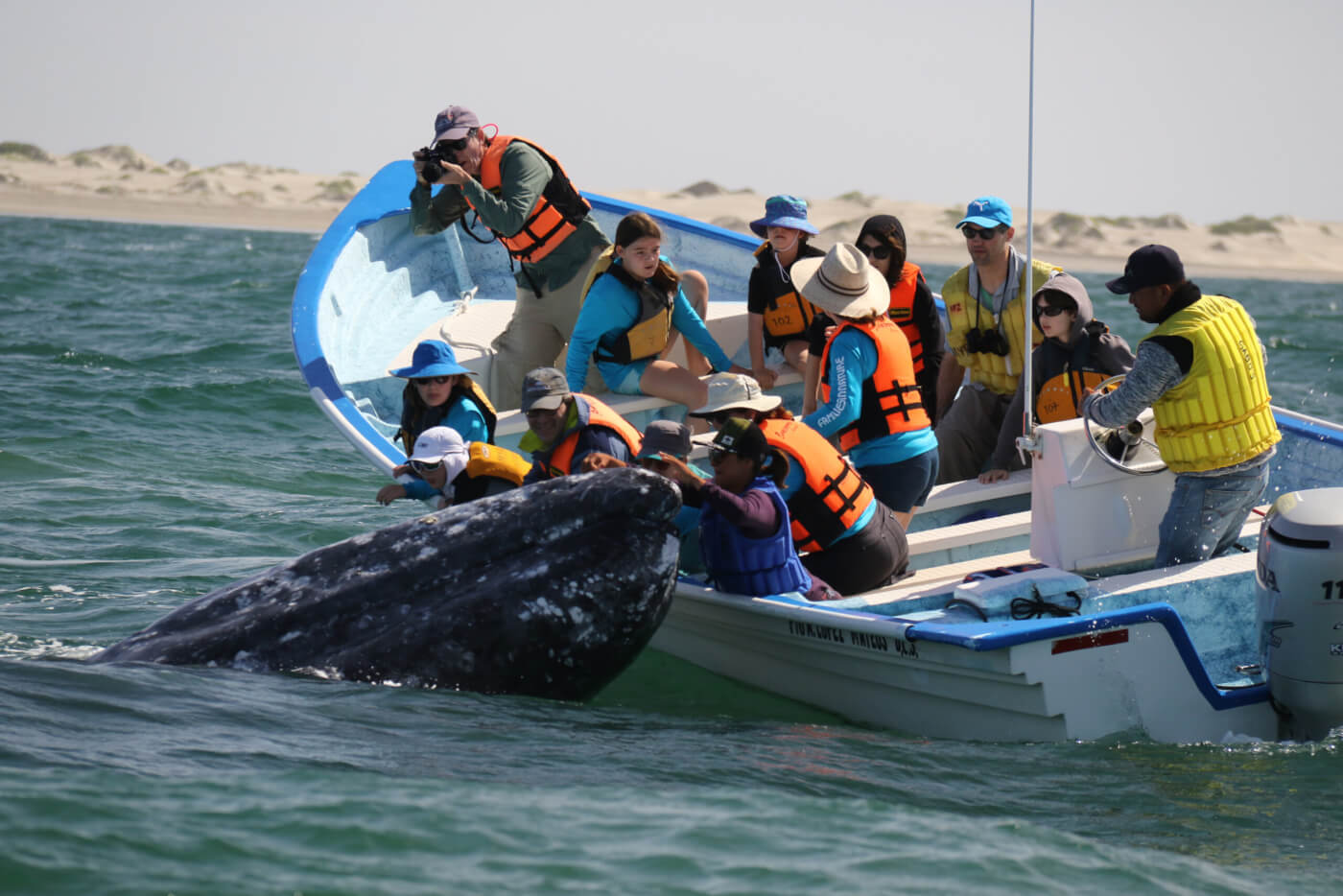
A curious baby gray whale came up to the boat to meet the families on the FIN Baja trip. Photo: Heather Kuhlken.
Kuhlken has been involved with the Children & Nature Network for many years and remembers how powerful it was to connect with the organization when she was getting Families in Nature off the ground. She points to collaboration between the groups as one of the keys to their success as a nonprofit and swears by the value of sharing resources, knowledge and ideas to help other groups grow and thrive.
“The Children & Nature Network has always been a place where people who want to move the needle on conservation are gathering,” she said. “It’s a place for those of us who see that a connection to nature is the foundation for all conservation work – and it gives us the ability to make progress in ways we couldn’t do alone.”
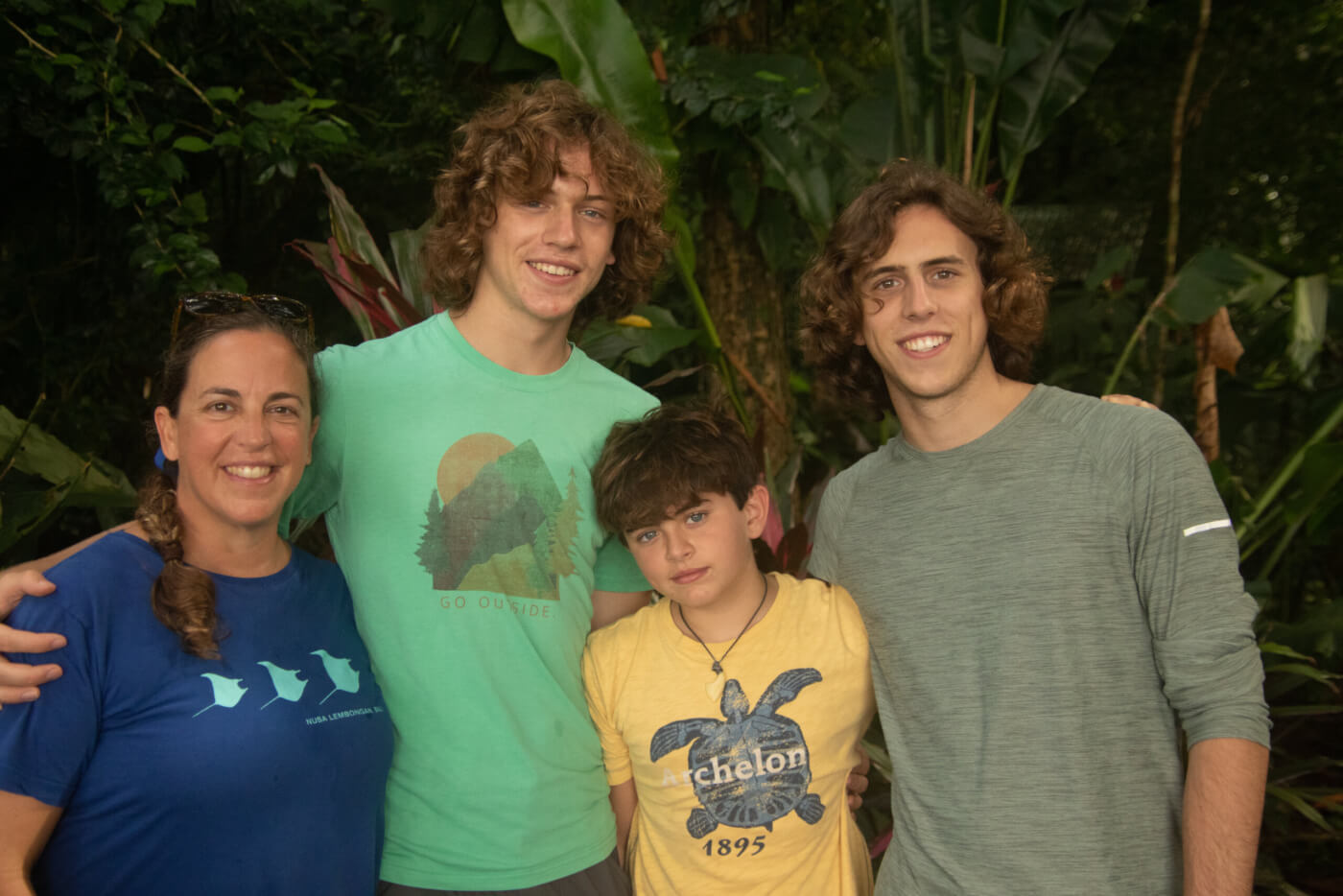
Heather Kuhlken with her children in Golfito, Costa Rica on the July 2022 shark tagging FIN trip.
Families in Nature website
Families Together in Nature page on Children & Nature Network website
“Nature play can encourage care for the earth” infographic
Family Nature Play & You, an eGuide for families
Nurturing families’ confidence to explore natural places — together, by Rosalind Allen
Steam Beans is demystifying nature — and science — for Black girls, by Tonyaa Weathersbee
CitySprouts school garden program improves science learning equity, by Jeffrey Perrin
-
Network News
POLICY UPDATE: Policy and advocacy for the children and nature movement
-
Voices
Binoculars, bald eagles and my journey as a Black birder
-
Richard Louv
THE WONDER BOWL: Ten Spring and Summer Nature Activities for Kids and Adults
-
Network News
Minneapolis Spotlight: The promise and possibilities of parks for youth
-
Voices
Why nature is my motherhood ally


